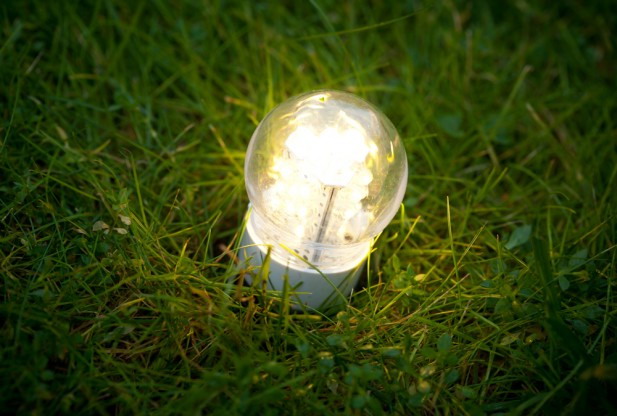A newly released report from the Department of Energy's Pacific Northwest National Laboratory and UK-based N14 Energy Limited compared the environmental impact of light-emitting diode (LED) light bulbs to compact fluorescent lamps. The LED lights were found to have a slight edge over the fluorescent lamps, but the gap is expected to grow significantly as technology and manufacturing methods improve over the next five years.
"The light-emitting diode lamp is a rapidly evolving technology that, while already energy efficient, will become even more so in just a few short years," said Marc Ledbetter, who manages PNNL's solid-state lighting testing, analysis and deployment efforts. "Our comprehensive analysis indicates technological advancements in the near future will help people who use these lamps to keep shrinking their environmental footprints."
The total environmental impact, including the energy and natural resources needed to manufacture, transport, operate and dispose of light bulbs, was examined in the report. Researchers looked at fifteen different impacts as they evaluated environmental footprints, including the potential to increase global warming, use land formerly available to wildlife, generate waste and pollute water, soil and air. The complete life cycles of three types of light bulbs were followed: LED's, compact fluorescents (CFLs) and traditional incandescent light bulbs.
This report, completed for the Solid-State Lighting Program of DOE's Office of Energy Efficiency & Renewable Energy, is the first public report to examine the environmental impact of LED manufacturing in depth. Companies generally keep manufacturing information private, even though manufacturing processes contribute substantially to a light bulb's environmental impact. The team was able to gather manufacturing data with the help of industry consultants and some companies on the condition that the final report would not reveal individual company data.
Choosing specific bulbs that best represent what is most typically and widely available for each of the three types of lights they studied, the team prepared for their analysis. They used a database to calculate the resources needed to produce the various components of the three light bulbs. The analysis revealed that both LEDs and CFLs are substantially more environmentally friendly than traditional incandescent, which consume far more electricity. For example, the specific incandescent light bulb the team studied consumes 60 watts of electricity, while the LED model they studied uses just 12.5 watts and the representative CFL only uses 15 watts to create the about same amount of light.
"By using more energy to create light, incandescent bulbs also use more of the natural resources needed to generate the electricity that powers them," Ledbetter said. "Regardless of whether consumers use LEDs or CFLs, this analysis shows we could reduce the environmental impact of lighting by three to 10 times if we choose more efficient bulbs instead of incandescents."
Although the energy consumed by lights when they are turned on makes up the majority of their environmental impact, the power consumption between the LEDs and CFLs was so similar that the team found the difference between them came largely from the energy and resources needed to make them.
CFLs cause slightly more environmental harm than today's LED lamp in all but one of the 15 impact areas. The one area where LEDs lost was generating hazardous waste that must be taken to a landfill because LED lights include a component called a heat sink, a ribbed aluminum segment that is attached to the bottom of the LED bulbs. Aluminum heat sinks absorb and dissipate heat that's generated by the bulb, preventing it from overheating. The process to mine, refine and process the aluminum in heat sinks is energy-intensive and creates several byproducts such as sulfuric acid that must be taken to a hazardous waste landfill.
Research and development is expected to further improve the efficiency of LED lamps, which in turn will reduce the amount of heat they produce and the size of heat sink they require. The report found that this, and other improvements in manufacturing processes and electronics will lead LED bulbs to be even more environmentally friendly than CFLs within five years.
The team expects the LED bulb of 2017 will have 50 percent less environmental impacts than today's LED lamps and 70 percent less impacts that those found in today's CFLs, which are not expected to change significantly in the near future.






